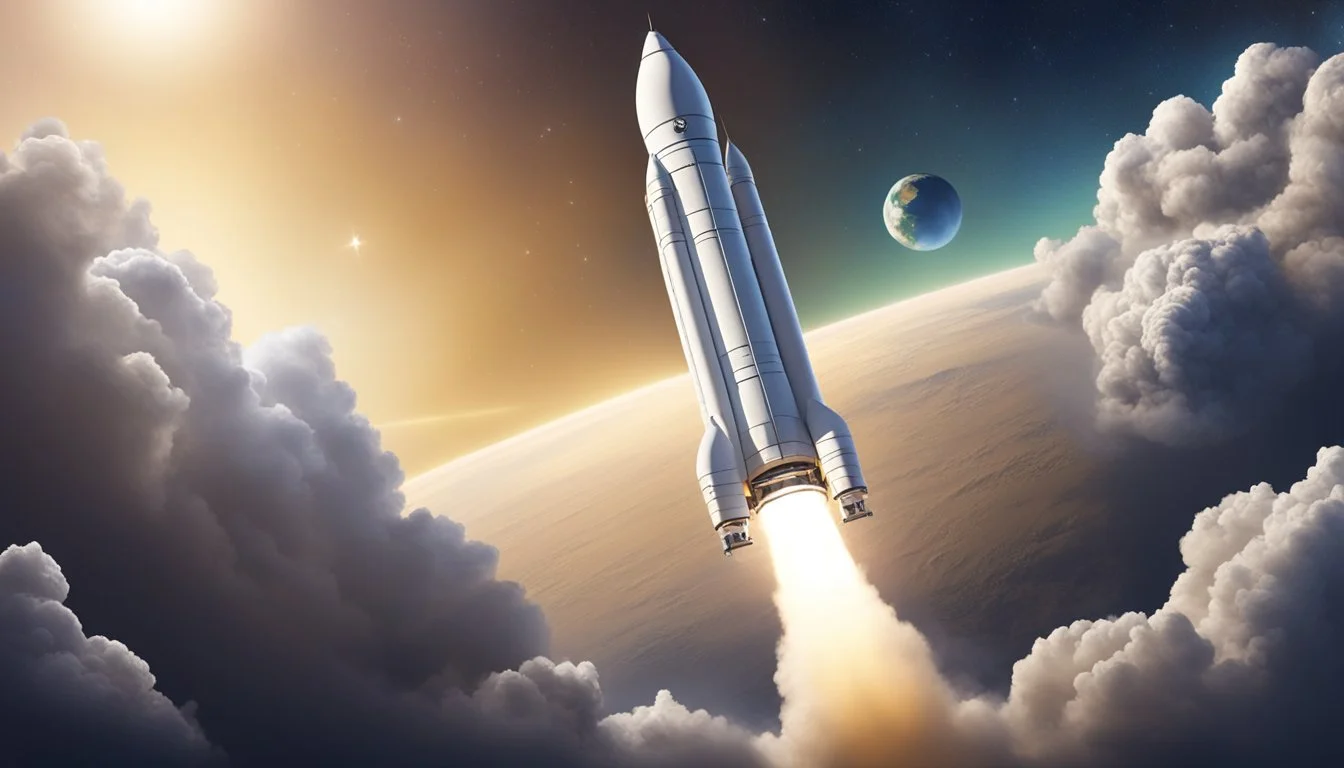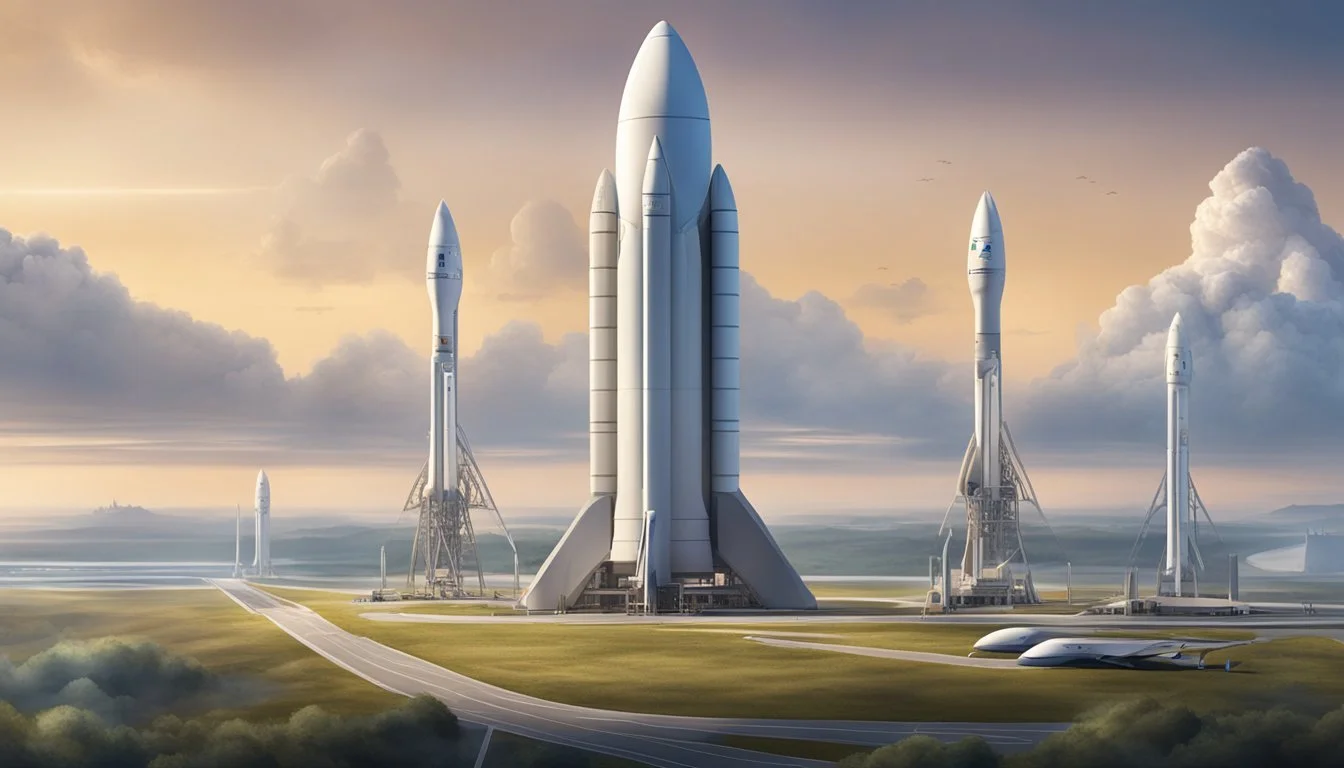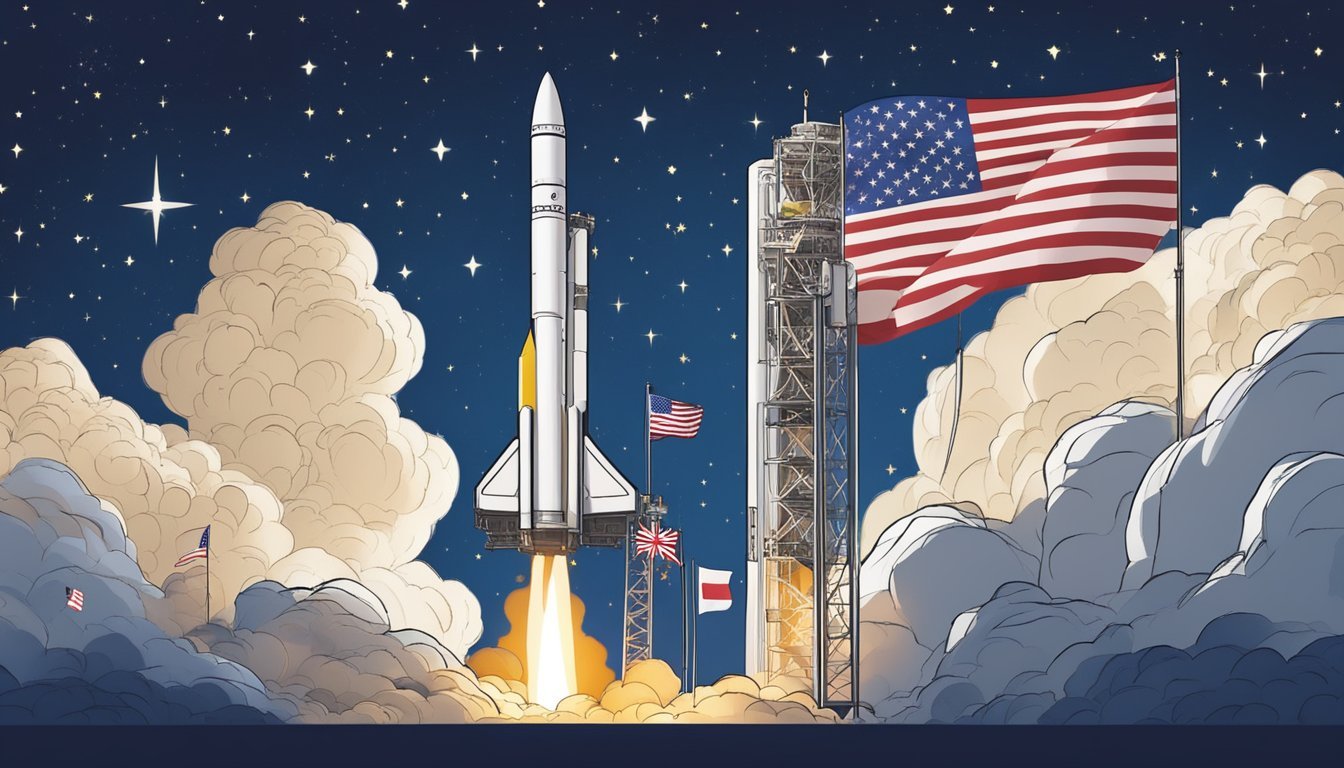Reusable Rockets Revolution
Elon Musk's Game-Changer Reshapes Space Exploration
Reusable rockets have revolutionized space exploration, with Elon Musk's SpaceX leading the charge. These innovative vehicles can launch payloads into orbit and return to Earth for reuse, drastically reducing costs and increasing launch frequency. SpaceX's reusable rockets have cut space transportation expenses by up to 30%, making space more accessible for various missions and industries.
The development of reusable rockets marks a significant technological milestone. SpaceX's Falcon 9 and Falcon Heavy rockets have successfully demonstrated the ability to land their first stages vertically after launch, allowing them to be refurbished and reflown. This achievement has captured attention across the space industry and sparked a new era of competition in rocket design.
Elon Musk's vision extends beyond Earth orbit. SpaceX aims to use its reusable rocket technology to support ambitious plans for lunar missions and eventual human settlement on Mars. The company's Starship project represents the next evolution in reusable rocket design, promising even greater payload capacity and the potential for interplanetary travel.
The Genesis of Reusable Rockets
Reusable rockets emerged as a revolutionary concept in space exploration, promising to drastically reduce launch costs and increase mission frequency. Two prominent companies, SpaceX and Blue Origin, led the charge in developing this groundbreaking technology.
Pioneering SpaceX and the Falcon 9
SpaceX, founded by Elon Musk, set out to make space travel more affordable through reusability. The company's flagship Falcon 9 rocket became the first orbital-class booster to successfully land and be reused.
SpaceX invested over $1 billion in reusable launch technologies. This significant investment aimed to recoup development costs and lower future launch prices.
The first successful landing of a Falcon 9 first stage occurred in December 2015. This milestone marked a turning point in rocket technology.
In 2017, SpaceX achieved another breakthrough by relaunching a previously flown Falcon 9 booster. This event demonstrated the viability of rocket reusability on a commercial scale.
Blue Origin's New Shepard and Reusability Milestones
Blue Origin, founded by Jeff Bezos, focused on suborbital reusable rockets with its New Shepard vehicle. The company aimed to develop technologies for space tourism and research.
New Shepard achieved its first successful vertical landing in November 2015. This accomplishment came just weeks before SpaceX's Falcon 9 landing.
Blue Origin's approach differed from SpaceX's by initially targeting suborbital flights. This strategy allowed for faster development and testing cycles.
The company's commitment to the "gradatim ferociter" (step by step, ferociously) motto guided its methodical approach to reusable rocket development. This philosophy emphasized safety and reliability in the pursuit of innovation.
Technology Behind Reusability
Reusable rockets rely on advanced engineering and cutting-edge technologies. These innovations enable controlled descents, precise landings, and robust manufacturing processes essential for multiple launches.
Controlled Descent and Precision Landing
Reusable rockets employ sophisticated guidance systems and AI algorithms to navigate their return to Earth. Onboard computers constantly calculate trajectory adjustments, factoring in wind speeds and atmospheric conditions.
Grid fins provide aerodynamic control during descent, while cold gas thrusters make fine adjustments. As the rocket approaches the landing zone, its engines reignite to slow its descent.
Landing legs deploy moments before touchdown. Advanced sensors and computer vision systems guide the rocket to a precise landing on drone ships or ground pads. This technology allows for pinpoint accuracy, even in challenging conditions.
Advancements in Manufacturing for Rockets
Reusable rockets require durable materials that can withstand extreme temperatures and forces. Manufacturers use advanced alloys and composites to create lightweight yet strong structures.
3D printing plays a crucial role in rocket production. This technology allows for complex geometries and reduces the number of individual parts. Automated inspection systems ensure quality control throughout the manufacturing process.
Engineers design components with reusability in mind. Heat shields and engine parts undergo rigorous testing to ensure they can endure multiple launches and re-entries. Modular designs facilitate easy replacement of worn components between flights.
Cost Implications and Economic Impact
Reusable rockets have revolutionized the economics of spaceflight. This innovation has led to significant cost reductions and reshaped the private spaceflight industry.
Cost Reduction through Reuse
SpaceX's reusable rocket technology has dramatically lowered launch costs. The company's Falcon 9 rocket can be reused multiple times, cutting expenses by millions of dollars per launch.
Initial development of reusable technology was costly, with SpaceX investing over $1 billion. However, this investment has paid off through substantial savings on subsequent launches.
Reusability allows SpaceX to recover and refurbish rocket boosters, engines, and other components. This approach reduces the need for manufacturing new parts for each mission.
Market Influence on Private Spaceflight Costs
SpaceX's cost-effective launches have disrupted the commercial space industry. Competitors have been forced to innovate and lower their prices to remain competitive.
The reduced launch costs have made space more accessible to a wider range of customers. Small satellites, scientific payloads, and commercial ventures can now reach orbit at a fraction of previous prices.
This cost reduction has spurred growth in the private spaceflight sector. More companies are entering the market, leading to increased competition and further innovation in launch technologies.
SpaceX Missions and the Reusable Rocket Program
SpaceX has pioneered reusable rocket technology, revolutionizing space travel and reducing mission costs. The company's innovative approach has led to numerous successful launches and landings, paving the way for more ambitious future missions.
Significant Test Flights and Successful Landings
SpaceX began its journey towards reusability with the Falcon 9 rocket. In 2015, the company achieved its first successful booster landing. This milestone marked the beginning of a new era in spaceflight.
By 2017, SpaceX had significantly increased its landing success rate, completing 15 booster recoveries in a single year. The company refined its techniques, mastering both land and sea landings on drone ships.
A notable achievement came in 2018 when SpaceX launched and landed three Falcon 9 boosters simultaneously during the Falcon Heavy demonstration mission. This feat showcased the scalability of their reusable technology.
The Role of Falcon Heavy and Starship in Future Missions
Falcon Heavy, SpaceX's powerful heavy-lift vehicle, plays a crucial role in the company's mission portfolio. It can lift over 63 metric tons to low Earth orbit, making it ideal for large satellite deployments and deep space missions.
The spacecraft has already completed several successful commercial and government missions. Its reusable side boosters further reduce launch costs for heavy payloads.
Starship, SpaceX's next-generation fully reusable launch system, promises even greater capabilities. Designed for both Earth orbit and interplanetary missions, Starship aims to revolutionize space travel.
The vehicle is undergoing rigorous testing, with plans for orbital test flights. Once operational, Starship could enable crewed missions to Mars and serve as a versatile platform for various space applications.
Environmental and Regulatory Considerations
Reusable rockets present both challenges and opportunities for environmental impact and regulatory compliance. SpaceX must navigate complex regulations while striving to minimize the ecological footprint of frequent launches.
Reducing the Environmental Impact of Rocket Launches
SpaceX's reusable rockets offer potential environmental benefits by reducing space debris and manufacturing waste. The company aims to decrease the carbon footprint of launches through fuel efficiency improvements and recovery of rocket components.
However, increased launch frequency raises concerns about atmospheric pollution and local ecosystem disruption. SpaceX is exploring cleaner propellants and noise reduction technologies to mitigate these effects.
The company has implemented recycling programs for recovered rocket parts, further reducing waste. Ongoing research focuses on minimizing the environmental impact of rocket exhaust and potential effects on the ozone layer.
FAA Regulations and SpaceX Compliance
The Federal Aviation Administration (FAA) oversees commercial space launches in the United States. SpaceX must obtain licenses and adhere to strict safety protocols for each mission.
FAA regulations cover areas such as launch site selection, flight path approval, and public safety measures. SpaceX works closely with the FAA to ensure compliance and has faced fines for violations in the past.
The company's rapid innovation sometimes challenges existing regulatory frameworks. This has led to ongoing dialogue between SpaceX and the FAA to update regulations for reusable rocket technology.
SpaceX must also comply with environmental impact assessments and noise regulations at its launch facilities. The company has invested in sound suppression systems and conducts regular environmental monitoring to meet these requirements.
Infrastructure and Launch Sites
SpaceX has developed extensive facilities to support its reusable rocket program. These sites enable launching, landing, and refurbishing rockets for rapid reuse.
Cape Canaveral and Drone Ship Operations
SpaceX leases Launch Complex 40 at Cape Canaveral Space Force Station for Falcon 9 missions. The company also utilizes Launch Complex 39A at Kennedy Space Center for Falcon Heavy and crewed launches.
For ocean landings, SpaceX employs autonomous drone ships. These floating platforms allow first stage boosters to land at sea when missions require too much fuel for a return to launch site.
The drone ships "Of Course I Still Love You" and "Just Read the Instructions" operate in the Atlantic Ocean. They feature expanded decks and positioning systems to catch descending rockets.
Landing Zone 1 and the Expansion of Launch Facilities
Landing Zone 1 at Cape Canaveral provides a concrete pad for Falcon 9 first stages to touch down on land. This site allows for faster rocket recovery and refurbishment compared to sea landings.
SpaceX has expanded its Florida facilities to include a new hangar for processing landed boosters. This infrastructure supports rapid rocket turnaround times.
The company is also developing Starship launch sites in Texas and Florida. These facilities will accommodate larger vehicles and more frequent launches as SpaceX scales up operations.
SpaceX and International Collaboration
SpaceX has forged strong partnerships with NASA and expanded global connectivity through its Starlink project. These collaborations have significantly impacted space exploration and satellite communications.
NASA Partnerships and International Space Station Resupply
SpaceX's collaboration with NASA has revolutionized cargo delivery to the International Space Station (ISS). The company's Dragon spacecraft regularly transports supplies, scientific experiments, and equipment to the orbiting laboratory.
These missions have proven crucial for maintaining ISS operations and supporting ongoing research. SpaceX's reusable rockets have dramatically reduced the cost of these resupply missions, allowing for more frequent launches.
The partnership has also extended to crewed missions. SpaceX's Crew Dragon spacecraft now ferries astronauts to and from the ISS, restoring America's ability to launch humans into space from U.S. soil.
Communications Infrastructure with Starlink
Starlink, SpaceX's satellite internet constellation, aims to provide global broadband coverage. The project involves deploying thousands of small satellites in low Earth orbit.
This ambitious venture has the potential to bridge the digital divide, bringing high-speed internet to remote and underserved areas worldwide. Starlink satellites are launched in batches using SpaceX's reusable Falcon 9 rockets.
The system has already begun providing service to users in several countries. As the constellation grows, it promises to revolutionize global communications infrastructure.
Starlink's rapid deployment and expanding coverage demonstrate SpaceX's ability to impact not just space exploration, but also terrestrial connectivity on a global scale.
Exploration Goals and Future Prospects
SpaceX's reusable rocket technology has opened new possibilities for ambitious space exploration missions. The company's focus extends beyond Earth orbit to interplanetary travel and establishing a human presence on Mars.
Mars Colonization and Deep Space Exploration
SpaceX aims to make Mars colonization a reality. The company is developing the Starship spacecraft and Super Heavy booster specifically for this purpose. These vehicles are designed to transport large numbers of people and cargo to the Red Planet.
Initial missions will focus on establishing basic infrastructure and life support systems. SpaceX plans to send unmanned cargo missions before attempting crewed landings. The goal is to create a self-sustaining city on Mars within the next few decades.
Beyond Mars, SpaceX envisions using its technology for deep space exploration. Potential targets include Jupiter's moons and other outer solar system destinations.
Technological Advancements in Space Travel
Reusable rockets are just the beginning of SpaceX's innovations. The company is working on several key technologies to enable long-duration space travel and colonization.
In-orbit refueling is a critical capability for Mars missions. SpaceX is developing techniques to transfer propellant between spacecraft in low-Earth orbit. This will allow vehicles to be fully fueled before departing for Mars.
Advanced life support systems are another focus area. These will need to recycle air and water, produce food, and protect against radiation during long journeys.
SpaceX is also refining its propulsion technology. The Raptor engine, which uses liquid methane and liquid oxygen, offers improved efficiency and performance for interplanetary missions.
Payloads and Commercial Opportunities
SpaceX's reusable rockets have revolutionized payload delivery and opened new commercial opportunities in space. The company's Falcon 9 and Dragon capsule have become key players in transporting cargo and satellites for various clients.
Utilizing the Falcon 9 and Dragon Capsule
The Falcon 9 rocket serves as the workhorse for SpaceX's payload delivery missions. It can lift up to 22,800 kg to low Earth orbit, making it suitable for a wide range of commercial and scientific payloads.
The Dragon capsule, designed to dock with the International Space Station, can carry both pressurized and unpressurized cargo. It has a payload capacity of 6,000 kg, split between its pressurized and unpressurized sections.
SpaceX offers regular cargo resupply missions to the ISS, demonstrating the reliability of their reusable systems for critical space operations.
Economic Viability for Commercial Payloads
Reusable rockets have significantly reduced launch costs, making space more accessible for commercial entities. The Falcon 9's first stage can be reused multiple times, cutting down on manufacturing and preparation expenses.
SpaceX's competitive pricing has attracted various clients, including:
Satellite operators
Research institutions
Government agencies
The company's ability to offer frequent launches at lower costs has enabled the deployment of large satellite constellations, such as Starlink, and facilitated more ambitious commercial space projects.
This economic model has spurred growth in the commercial space sector, encouraging new entrants and innovations in satellite technology and space-based services.
Achievements and Timeline of Reusable Rockets
Reusable rockets have transformed the space industry, dramatically reducing launch costs and increasing mission frequency. The journey toward reusability has been marked by significant milestones and technological breakthroughs.
December 2015: A Turning Point in Reusable Rocketry
On December 21, 2015, SpaceX achieved a historic feat by successfully landing the first stage of its Falcon 9 rocket at Cape Canaveral, Florida. This event marked a crucial milestone in the development of reusable launch vehicles.
The Falcon 9's first stage executed a controlled descent and touchdown on a designated landing pad. This accomplishment demonstrated the feasibility of recovering and reusing rocket components, a concept previously deemed impractical by many in the aerospace industry.
The success of this mission paved the way for future advancements in reusable rocket technology. It proved that rockets could be designed to return safely to Earth after delivering payloads to orbit, rather than being discarded after a single use.
This breakthrough significantly reduced the cost of space launches. By reusing the most expensive part of the rocket, companies could offer more competitive pricing for satellite deployments and other space missions.






